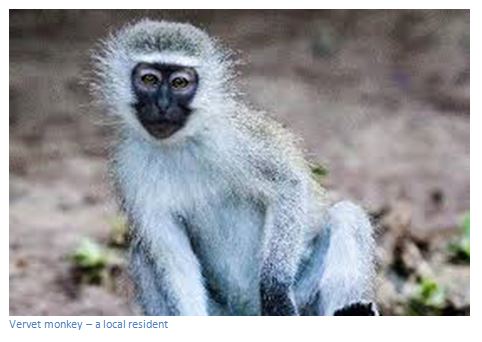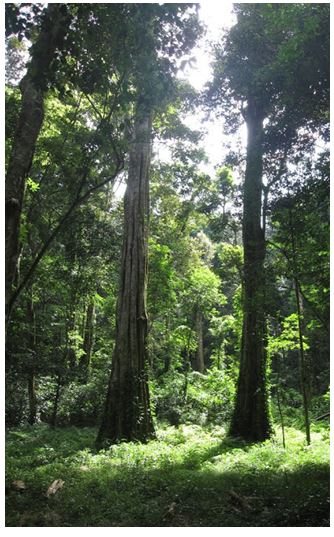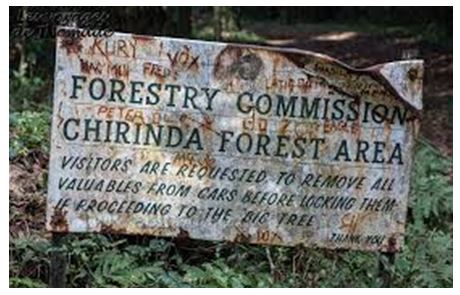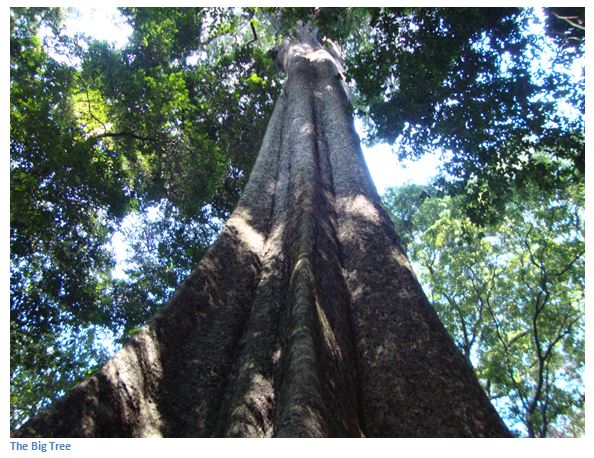Chirinda Forest and the Big Tree
- The districts of Melsetter and Chipinga have the finest natural timber in Rhodesia, and in a corner of Chipinga, close to the Portuguese border, stand the strange forest of Chirinda on the slopes of Mount Silinda in south-eastern Zimbabwe.
- The Chirinda Forest Reserve covers about 950 hectares of primary evergreen forest. It is one of the larger protected forest areas in the country with a unique combination of tropical and subtropical vegetation species and is the remains of a once extensive forest which covered this area in a previous era with a hotter, wetter climate.
- A walk in this beautiful forest with a visit to the big Tree is highly recommended, it feels like the Bunga Forest Botanical Reserve except the trees are much bigger and older and the Forest canopy that much higher.
From Birchenough Bridge take the A9 heading toward Mutare, 2.82 KM turn right onto the A16, 24.98 KM turn left onto the A10, 49.0 KM the A10 meets the Road to Chipinge and Espungabera (Mozambique border) 63.2 KM reach Chipinge; 95.4 KM reach Mt Selinda Hospital and Chirinda Forest. The Big Tree is about 1.8KM due South of Mt. Selinda Hospital, follow the gravel road and signposts.
GPS reference: 20⁰26′22.99″S 32⁰42′12.67″E
Local communities call this patch of forest Tshirinda or 'Refuge', and within its embrace the world could be forgotten. The undergrowth is densely green, mosses and ferns flourish on the floor of the forest. Bracken grows wherever a clearing breaks the high canopy of the forest and sunlight can shine through. Butterflies and bees are busy among the flowers that unfurl their petals in the closed forest world. Great ropes of lianas make a tangle among the branches of the tall trees.
The parasite fig (Ficus natalensis) often called the strangler fig, is quite common here. The fig tree grows as epiphyte on a branch of the host tree and sends roots earthwards. In the long run, it suffocates its host, which dies and disintegrates to humus. At the end of this process, the fig remains standing as hollow trunk of roots and stems and you can crawl inside some of them and have a look at the tree from within.
The chief trees of the forest are the three great mahoganies; the red mahogany, (Khaya nyasica) greatest of all the trees in the forest, the brown mahogany (Lovoa swynnertoni) and the white mahogany (Trichelia chirudensis)
The Big Tree of Chirinda Forest is a red mahogany. It stands by itself in a little clearing within the forest. When first measured in 1920 by staff at the Mount Selinda Mission it was over 64 metres high. Mrs Tawse Jollie in an article published in 1927 says it is 66.4 metres high (218 feet) but in 1939, it was measured at 59 metres tall; sadly some of the upper branches died off and it now stands at 54 meters high. The Big Tree blooms in November, when the small white flowers open to the sun. The fruit, a large capsule full of winged seeds, does not ripen till the following September, when the capsule breaks and scatters/ its seeds through the forest.
Len Mullin in his book Historic Trees of Zimbabwe states the old giant is moribund and has lost height during the last 40 years or so, but amongst the indigenous trees of Zimbabwe, only the large baobabs have greater thickness.




